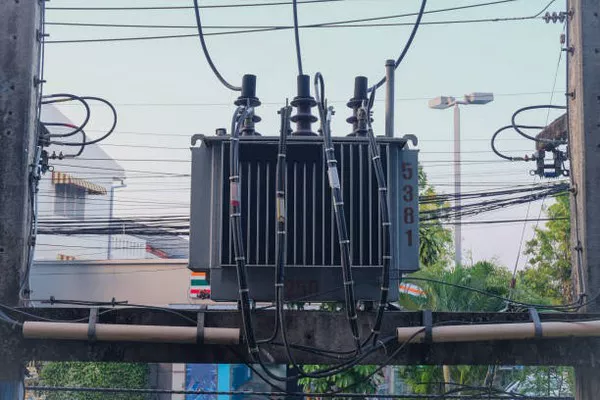Voltage transformers, often referred to as “transformers,” play a pivotal role in the efficient distribution of electrical energy across various applications. These devices are crucial components in power systems, converting voltage levels to ensure the safe and effective transmission of electricity. In this article, we will delve into the fundamental principles behind voltage transformers and explore how they contribute to the transformation of electrical energy.
The Basics of Voltage Transformers:
Voltage transformers are electromagnetic devices designed to change voltage levels between the input and output sides without altering the frequency of the electrical signal. This transformation is vital for the reliable and safe distribution of electricity across different voltage domains, such as stepping up voltage for long-distance transmission or stepping down voltage for consumer use.
Principles of Voltage Transformation:
The core principle governing voltage transformation is electromagnetic induction. Voltage transformers consist of a primary winding, a secondary winding, and a magnetic core. When an alternating current (AC) flows through the primary winding, it creates a changing magnetic field around the core. This changing magnetic field induces a voltage in the secondary winding through electromagnetic induction.
The turns ratio between the primary and secondary windings determines the voltage transformation ratio. If the secondary winding has more turns than the primary winding, the transformer will step up the voltage. Conversely, if the primary winding has more turns, the transformer will step down the voltage.
Applications of Voltage Transformers:
Voltage transformers find applications in various sectors, each with its specific requirements for voltage levels and safety. Some common applications include:
Power Transmission: In high-voltage power transmission systems, transformers are used to step up the voltage for efficient long-distance transmission, minimizing energy losses. At the receiving end, transformers step down the voltage for distribution to end-users.
Industrial Processes: Industries often require specific voltage levels for their equipment to operate optimally. Voltage transformers ensure that the electricity supplied to industrial machinery is at the desired level, contributing to operational efficiency and equipment longevity.
Consumer Power Supply: In residential and commercial buildings, voltage transformers play a crucial role in stepping down the voltage to safe levels for household appliances and electronic devices. This ensures the safety of both equipment and users.
Renewable Energy Integration: With the increasing adoption of renewable energy sources like solar and wind, voltage transformers facilitate the integration of these variable power sources into the existing electrical grid. They help manage voltage levels and ensure a stable supply of electricity.
Factors Influencing Voltage Transformation:
Several factors impact the efficiency and performance of voltage transformers. These include:
Core Material: The choice of core material, such as iron or silicon steel, affects the transformer’s magnetic properties and overall efficiency.
Turns Ratio: The turns ratio between the primary and secondary windings determines the extent of voltage transformation. Precise control of this ratio is crucial for meeting specific voltage requirements.
Load Conditions: The transformer’s performance is influenced by the type of load it is connected to, whether resistive, inductive, or capacitive. Different loads affect the voltage regulation and efficiency of the transformer.
Temperature: Transformers generate heat during operation, and their efficiency can be compromised at elevated temperatures. Proper cooling mechanisms are implemented to maintain optimal performance.
Transformer Types:
There are several types of voltage transformers designed for specific applications:
Power Transformers: These transformers are used in power transmission and distribution networks to step up or step down voltage levels over long distances.
Distribution Transformers: Found in residential and commercial areas, these transformers step down voltage for local distribution to end-users.
Instrument Transformers: These transformers are used for metering and protection purposes, providing accurate measurements of current and voltage in power systems.
Auto Transformers: Auto transformers have a single winding with multiple taps, allowing for variable voltage outputs. They are commonly used in industrial applications.
See Also What Is Inside A Transformer On A Telephone Pole
Conclusion:
Voltage transformers are essential components in the modern electrical infrastructure, enabling the efficient and safe distribution of electrical energy across various applications. Understanding the principles behind voltage transformation, the factors influencing transformer performance, and the different types of transformers is crucial for ensuring reliable and sustainable power systems. As technology continues to evolve, voltage transformers will play a pivotal role in shaping the future of electrical energy distribution.

